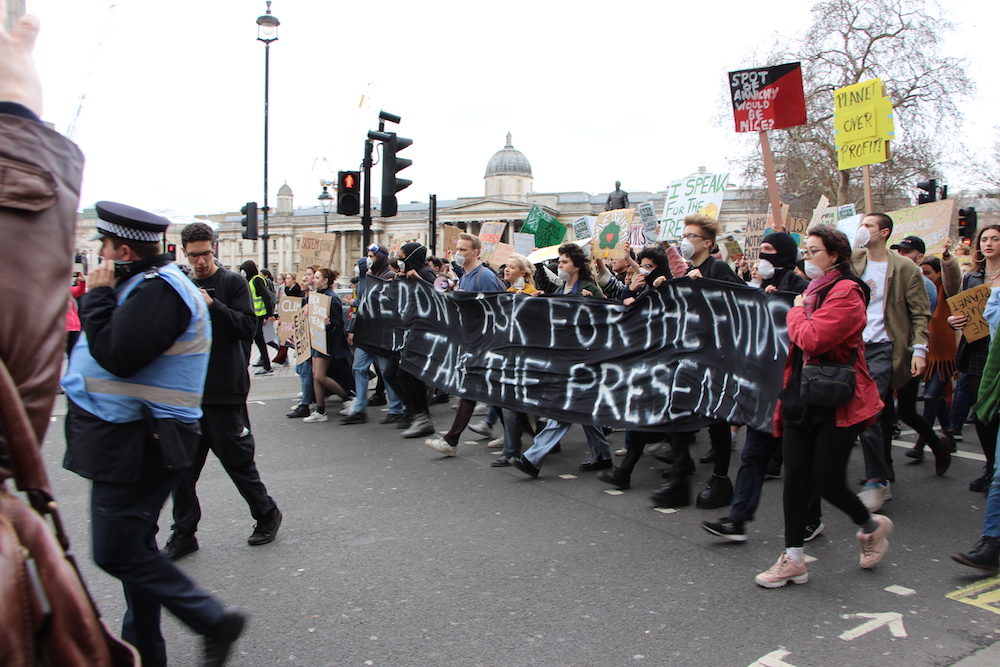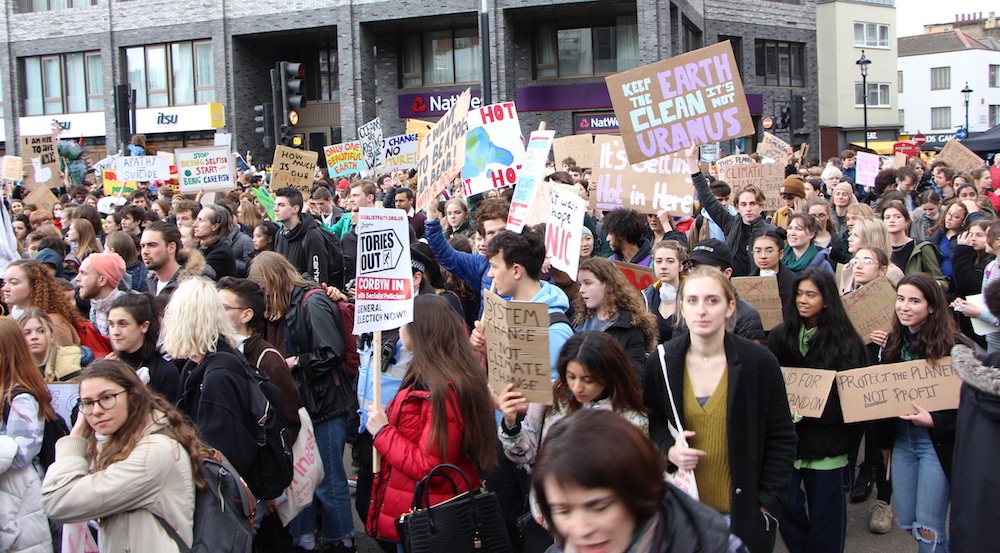
Over 20,000 young people in London went on strike from school and gathered in Westminster on March 15, as a part of the largest ever youth-led climate justice demonstration in the UK. They demanded that the government declare a climate emergency and step up to take immediate action against climate change.
Many students in the high school participated in the strike, with 17 students in middle school also joining in. Eighth-grader Elena Alexander said, “I went so that I could be part of a bigger voice telling the government that we need to stop messing around and do what needs to be done about climate change.”
From all around London, students left classes at 11 am and gathered with signs and posters, chanting and marching through Westminster. The day continued with speeches given by young strikers as well as Kumi Naidoo, Secretary-General of Amnesty International. The strikes continued later in the day on the streets of central London.
The root inspiration of these strikes was Greta Thunberg, a 16-year old Swedish political activist. In August 2018, Thunberg walked out of school every day for two weeks, biked to the Swedish Parliament, and sat outside with a sign saying “school strike for the climate.” She has continued to strike every Friday since then, joined with other students around Europe inspired by the Fridays for Future movement.
Thunberg has gained popularity all across the world, creating a significant movement of young people ready to take action when they feel leaders are not. The first UK nationwide strike was on February 15, and it has continued to grow in numbers and support since then. On March 15, the movement reached all parts of the globe, with over 2000 strikes in more than 115 countries. However, support and popularity are only growing, with another upcoming strike planned for April 12.

While the strikes are worldwide, the UK is individually involved, with the UK Student Climate Network (UKSCN) organizing all of the UK strikes. The UKSCN is a student-led organization giving people under the age of 18, who therefore don’t have voting rights, an opportunity to make a difference for the future of our planet. The UKSCN has created an event, Youth Strike 4 Climate, specifically for school strikes against government inaction on climate change.
The ASL middle school administration fully supported students using their voice to take a stand on critical political issues, after ensuring that each middle schooler’s parent was aware. They required students to get permission from parents and checked each student’s name on a list before letting them leave campus.
However, an eighth-grade student and march attendee, Maarya Adil said, “We shouldn’t need permission to take a stand and help save the world.” Adil said that attending an event like the climate strike should never be a question.
Adil said, “I plan on taking the most action that I can. I am not a hundred percent perfect, but I am going to try to understand that what I am doing is causing harm to the world.”
She plans on personally doing things to change her impact, as well as spreading the word to people around her about how they can make a difference.
Beyond individuals, the ASL community is also being conscious of their effect on the climate. The middle school already monitors energy usage at all times, observes Earth Hour, has a Sustainability Council, and includes climate change in curriculum. However, middle school principal Mr. Peter Lutkoski said, “What we are doing right now is definitely not enough, and the more we can do the better.”
The strikes have inspired individuals as well as the ASL community to be mindful of their impact on the climate. This movement has also been an inspiration for people everywhere, whether it shows young people that they can make a difference or political figures that they need to focus on climate change.
